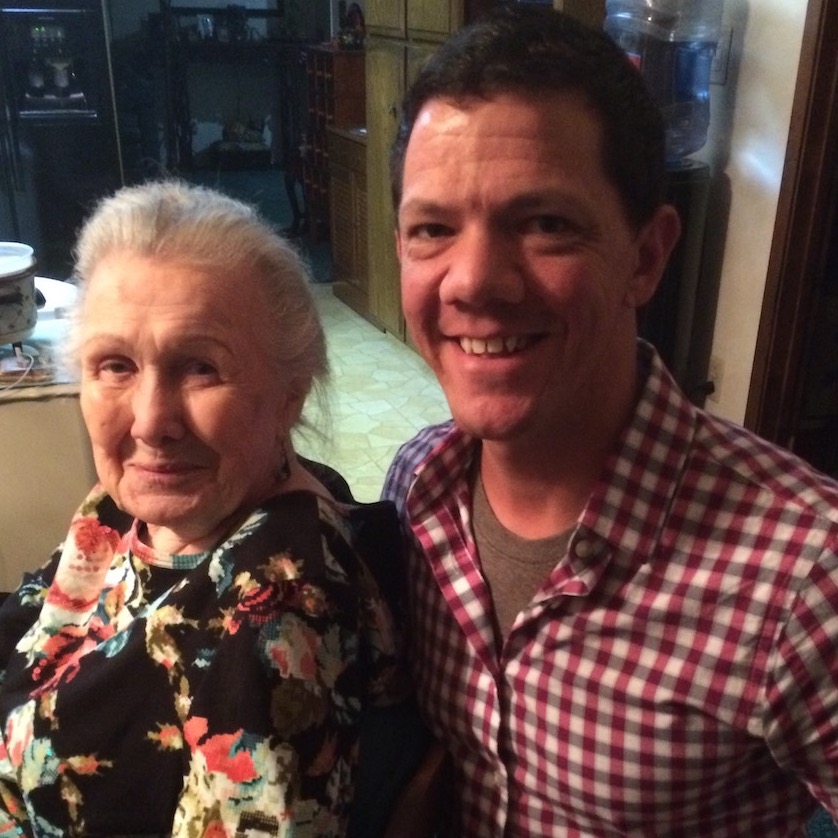Skippy was instrumental in naming west coast swing in the 1950’s, with helping it become the state dance of CA in the 1980’s and was the co-founder of the WSDC.
During my visit she said to me “Brian, I didn’t plan on living this long but as long as I’m here I’m going to try to contribute.” To that end she allowed me to share some of her work with you through our website. Below is one of the papers she gave me to share with you. Best wishes, Brian B
Wanna learn more about Skippy?
Click here to learn more about here and read our Skippy Series in order.

Skippys words…
Rolling count – Movement at it’s best
Rolling Count, turns out to be NOT a new concept. lt is simply an identification of a skill that has long been known, but not identified. Most top professional dancers eventually dance Rolling Count as a natural progression – that is simply identified as “Body Flight”. Some people spend years learning “Body Flight”. Learning Rolling Count develops this skill effortlessly in weeks, instead of years.
The following statements answer some of our most frequently asked questions.
1. The “a” in “&a1” is pronounced like the “a’s” in America.
2. Rolling Count is a constant “&a1&a2-&a3a&4{a5&a6- or &a7&a8”. This count is ONLY for 4/4 time Music (3/4 time is counted “&a1&a2&a3”).
3. Rolling Count is a Dance MOVEMENT Count – lt is NOT a form of Musical interpretation.
4. EVERY Social Dance form is enhanced by the use of Rolling Count.
5. The “&a” before Count “1″ of any move – is the transportation of the CPB (Center Point of Balance) toward its new location.
6. A Rolling TRIPLE is the best way to introduce Rolling Count to a student. (Step on “1” – Hold the “&” Count – Step on both the “a” and the “2”).
7. The “&a” in Double Rhythm that precedes the “1” requires more control of the CPB. (Tighten the CPB and move it forward on both the “&” and the “a” BEFORE the foot and the CPB land on Count “1”). Repeat this on Count “2”.
8. The “&” Count belongs to the CPB. Rolling Count is the only form of counting where the body has a movement count all its own – INDEPENDENT of the weight change.
9. Rolling Count is NOT a STYLE selection. lt is a LEVEL of Performance. Body Flight can be detected in top professional dancers, even if the dancers are totally unaware that they are doing Rolling Count.
10. Musicians will sometimes count “le&a 2e&a”, which is NOT a Rolling Count. lt is a busier form of Straight Count and takes on a rushed look in the dance – particularly in syncopations.
11. When first teaching Rolling Count, it is important to substitute “VERBAL” DIRECTION for the count (&aStep &Step-Step).
12. The “&” in a Rolling Triple is a TIME SPACE that creates a rhythmic thrill that you can FEEL. No matter how accurately you count – leaving out the “&” from a Rolling Triple will NOT depict Rolling Count. (NEVER say “‘1 a2 – 3a4”, etc.).
13. Simply WALKING DOWN the STREET becomes an exciting experience, once you have mastered Rolling Count for your every move. Rolling Count puts CONFIDENCE in every step you take!
Edited: Skippy Blair © 9-12, 4-14, 5-14, 6-14, 7-22-15




 Brian & Megan
Brian & Megan